

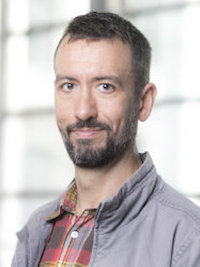
Morgan Beeby is a group leader at Imperial College London. In London. He earned his PhD with Todd O. Yeates at UCLA where he developed interests in evolution, bioinformatics, and structural biology. Electron cryotomography was the clear next step, prompting him to join Grant’s lab as a postdoc from 2008 to 2012. In 2013 he established his own lab using cryoET as the backbone of an interdisciplinary research program to understand the evolution of molecular machines, with a focus on bacterial flagella.
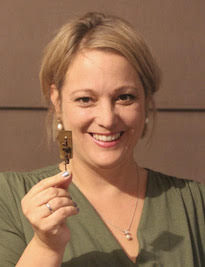
Ariane Briegel is Professor of Ultrastructural Biology at the Leiden University (The Netherlands) and co-director of the Dutch Center for Electron Nanoscopy (NeCEN). She earned her PhD in the laboratory of Prof. Wolfgang Baumeister at the Max Planck Institute in Martinsried Germany. Here, she learned the power of Electron Tomography to study microbes in three dimensions and at macromolecular resolution. She continued to explore the wonders of bacterial structure and function in the laboratory of Grant Jensen as a postdoc and research scientist. She has 20 years of experience using cryo-electron microscopy to study bacterial and archaeal ultrastructure. The Briegel laboratory focuses on investigating how microbes sense and respond to their environment using cryoEM methods.
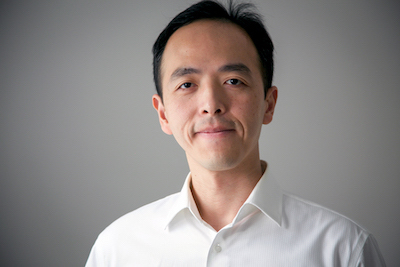
Yi-Wei Chang is a structural biology enthusiast and principal investigator at the University of Pennsylvania. Yi-Wei received his Ph.D. degree from National Tsing-Hua University and Academia Sinica in Taiwan, working with Chwan-Deng Hsiao in using X-ray crystallography to study atomic structural details of purified proteins. After being astonished by Grant Jensen’s visiting seminar at Academia Sinica highlighting the power of cryo-electron tomography in resolving macromolecular structures directly in cellular contexts, Yi-Wei set this as his long term research direction and was lucky enough to join the Jensen laboratory at Caltech in 2011 as a postdoctoral scholar. After years of working with the amazing group to master cryo-electron tomography methods and visualize fascinating macromolecular structures in situ, Yi-Wei launched his own laboratory at the University of Pennsylvania Perelman School of Medicine in 2019 to continue exploring the magnificent in-cell structural biology and to nurture the next generation of outstanding scientists.
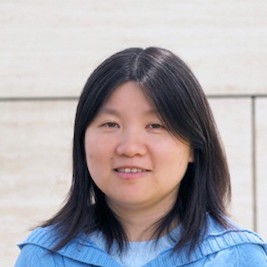
Songye Chen is the managing co-director of the Caltech Cryo-EM Facility. She earned her PhD in physics at Caltech, for investigations on ultrafast electron crystallography with Dr. Ahmed Zewail. She joined the lab of Dr. Grant Jensen as a postdoc after that and began her career as an electron microscopist working in cryoEM. She has been enjoying developing new methods, working with biologists and facilitating their cutting-edge research with state-of-the-art cryoEM technology.
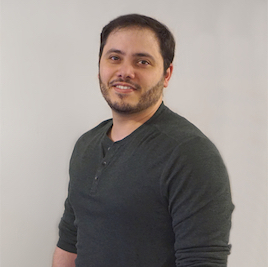
Georges Chreifi is a postdoctoral scholar at Caltech. He earned his Ph.D. in the laboratory of Tom Poulos at UC Irvine studying structure-function relationships in heme proteins, with a focus in X-ray crystallography and enzymology. He joined Grant Jensen’s lab in 2017 to do his postdoctoral research in cryo-EM. He is currently working on developing rapid tilt-series methods in cryo-ET and elucidating the architecture of the bacterial type IX secretion system.
Prabha Dias was an EM scientist and lab manager in Grant Jensen’s lab at Caltech from 2002 to 2007. Full bio to follow….
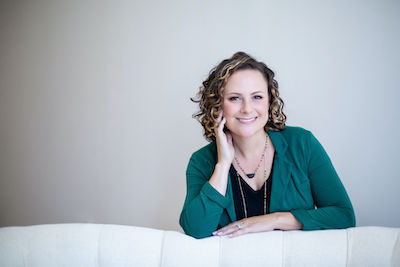
Dr. Megan Dobro is an Associate Professor of Biology at Hampshire College in Amherst, Massachusetts and Co-Founder and CEO of SafeTiva Labs. Dr. Dobro graduated with her PhD in Biology from the California Institute of Technology where she studied structural biology of viruses and bacteria using electron cryotomography in Dr. Grant Jensen’s laboratory.
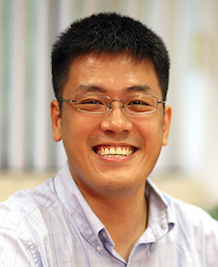
Lu Gan is a principal investigator in the Centre for BioImaging Sciences and Department of Biological Sciences at the National University of Singapore. He did his undergraduate training at Caltech, where he studied antibody trafficking in Professor Pamela Bjorkman’s lab. Lu then received PhD training in structural virology with Professor Jack Johnson at The Scripps Research Institute. In 2006, he joined Grant Jensen’s lab as a postdoctoral scholar to study both bacterial cell-wall architecture and eukaryotic chromosome segregation. He moved to Singapore in 2011 to start his independent lab. Lu and his students continue to explore eukaryotic chromosomes and how they are regulated, all at molecular resolution.
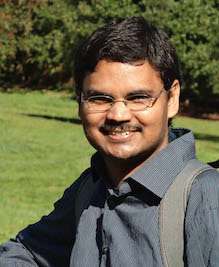
Debnath Ghosal is a senior lecturer at University of Melbourne. Debnath received his PhD degree in structural biology from the MRC Laboratory of Molecular Biology (University of Cambridge, Darwin College), where he worked with Dr. Jan Lowe on bacterial cell division. Subsequently, he joined Dr. Grant Jensen’s laboratory at Caltech for his postdoctoral training. At Caltech, he investigated the structure and function of bacterial secretion systems using electron cryotomography. Debnath established his own laboratory at University of Melbourne in 2020. His group is working on the structural and molecular biology of large bacterial protein complexes that are important for pathogenesis.
Gregory Henderson was a graduate student in Grant Jensen’s lab at Caltech from 2002 to 2007. Full bio to follow….
Cristina V. Iancu received her B.S. in Biophysics from the Faculty of Physics of the University of Bucharest, Romania, and her Ph.D. in Biochemistry from Iowa State University, Ames, IA, U.S. Her graduate work in the protein crystallography group of Dr. Richard B. Honzatko involved structural and functional studies of key enzymes in gluconeogenesis and de novo nucleotide synthesis. She joined the cryo-EM lab of Dr. Grant J. Jensen as his first postdoc, where she worked on cryo-ET method development projects and cryo-ET structure determination of protein complexes, isolated carboxysomes, and carboxysome-producing bacteria. Currently, she works on drug discovery targeting carbohydrate transporters with Dr. Jun-yong Choe.
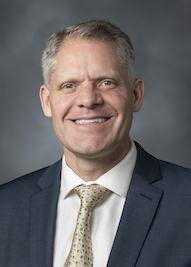
Grant J. Jensen is Dean of the College of Physical and Mathematical Sciences at Brigham Young University. He earned his doctorate in Biophysics from Stanford, working on electron microscopy of RNA polymerase and other protein complexes with Dr. Roger Kornberg. He continued his work in protein electron microscopy as a Damon Runyon-Walter Winchell post-doctoral fellow under the supervision of Dr. Kenneth Downing at the Lawrence Berkeley National Lab. Here his interests expanded to include electron tomography of whole cells. Grant launched his own lab at Caltech in 2002, where his research has focused on three main areas: the ultrastructure of small cells, the structural biology of HIV, and the further development of cryoEM technology. Most of the cryotomograms featured in this atlas were collected by members of his lab while working with him at Caltech. In 2020, Grant moved to Brigham Young University.
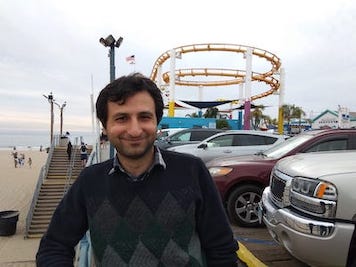
Mohammed Kaplan is currently a postdoc in the Jensen lab at Caltech. He did his PhD under the supervision of Prof. Marc Baldus at Utrecht University.
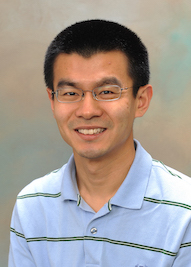
Zhuo Li is the director of the Electron Microscopy Core Facility at City of Hope Beckman Research Institute, in Duarte, California. He earned his PhD in biochemistry from the Institute of Biophysics, Chinese Academy of Sciences. He then did his postdoctoral research in the Jensen lab where he investigated the structure and function of bacterial cytoskeleton using cryogenic electron tomography.
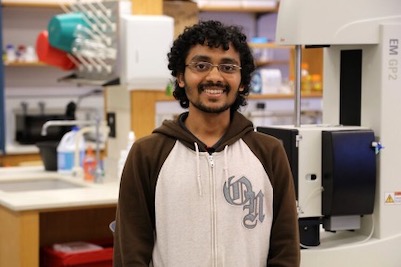
Shrawan Kumar Mageswaran is Cryo-ET Technical Director of the Beckman Cryo-EM Center at the University of Pennsylvania. He performed his graduate studies under the mentorship of Dr. Markus Babst at University of Utah. There he studied ESCRT (endosomal sorting complexes required for transport)-mediated biogenesis of multivesicular bodies (MVBs) using baker’s yeast as a model system with implications in different cancers, neurodegenerative diseases and AIDS. He then underwent his postdoctoral training in cryo-electron tomography (cryo-ET), first with Dr. Grant Jensen at Caltech and subsequently with Dr. Yi-Wei Chang at University of Pennsylvania. During this period, he studied several membrane remodeling systems including the ESCRTs (in archaea, yeast and mammalian cells), plasma membrane and mitochondrial damage response (in mammalian cells), and rhoptry secretion system (in apicomplexan parasites). He used cryo-electron tomography as the principal method for these studies. He also developed/utilized other ancillary techniques for cryo-ET such as: (1) cryogenic correlative light and electron microscopy (to locate scarce/transient targets by cryo-ET and to provide molecular annotations for structures in tomograms using fluorescence) and, (2) cryogenic focused ion beam milling (to aid in artifact-free thinning of thicker samples). His interests in all of the above research topics continue to this day.
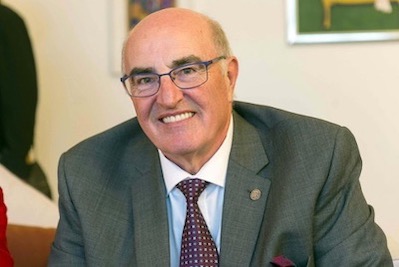
Alasdair McDowall is manager for the laboratory of Grant Jensen at Caltech. He is a career electron microscopist of 48 years and has managed, designed and directed microscopy centers and resources in the UK, USA, Germany and Australia. He is Emeritus Professor at the University of Queensland, Australia. He received his Doctorate from the University of Sorbonne, Paris. His thesis was enhanced by the unique discovery in 1981 when Dubochet and McDowall at the European Molecular Biology Laboratory (EMBL) reported the first vitrification of water at ambient pressures as seen in the electron microscope. This landmark result pioneered research that evolved into modern day molecular cryo-electron microscopy and the awarding of the 2017 Nobel Prize in Chemistry to Dubochet, Henderson and Frank. In 2019 he was appointed a Queen Elizabeth II honors recipient, and awarded Member of the Order of Australia. “For significant service to science, particularly in the field of electron microscopy”.
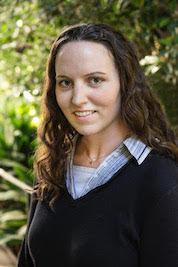
Dr. Lauren Ann Metskas studied the conformational dynamics of disordered proteins during her PhD in Molecular Biophysics and Biochemistry at Yale University. After graduating in 2016, she transitioned to correlated cryo-fluorescence and cryo-electron microscopy methods development during her first postdoctoral position with the Briggs group at EMBL-Heidelberg and the MRC Laboratory of Molecular Biology. Lauren Ann joined the Jensen lab in 2018, whereupon she discovered a new interest in using tomography to study bacterial microcompartments and outer membrane vesicles. She is now an Assistant Professor in the Biological Sciences and Chemistry departments of Purdue University.
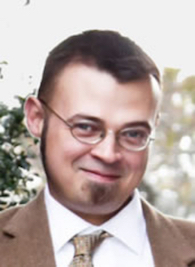
Following his graduation from the University of Dallas, Gavin Murphy spent two years studying X-ray crystallography as a Fulbright Scholar at the European Molecular Biology Laboratory in Hamburg, Germany. He then joined the lab of Grant Jensen at Caltech, applying cryo-electron tomography to solve the structures of bacterial macromolecular machinery. He received his doctorate in 2007, for work that included one of the first subtomogram averages ever published, revealing the ultrastructure of the flagellar motor. Wanting to make a more direct impact on human health, in his postdoctoral work with Sriram Subramanian at the National Institutes of Health he developed and applied methods for focused ion beam scanning electron microscopy (FIB-SEM) and correlative light and electron microscopy (CLEM) to visualize large volumes of eukaryotic cells and tissue. In 2012, Gavin became Director of the Electron Microscopy Center at Indiana University Bloomington. He died in 2017, and is fondly remembered and greatly missed by his colleagues.
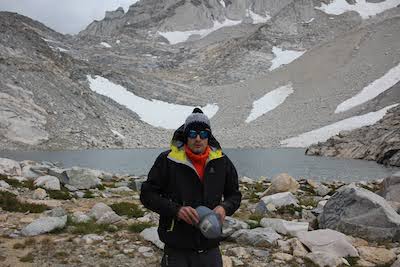
William J Nicolas, a plant biologist and electron microscopist at heart, received his doctorate from the University of Bordeaux (France) working on the ultrastructure of the nanopores connecting plant cells to one-another called plasmodesmata. He joined Caltech a a postdoctoral scholar in the Jensen and Meyerowitz labs at the beginning of 2018 to work in the still vastly unexplored field of cryo-EM on the plant cell wall and cellulosic bacterial biofilms. He is currently an HHMI research specialist in the Gonen Lab at UCLA.
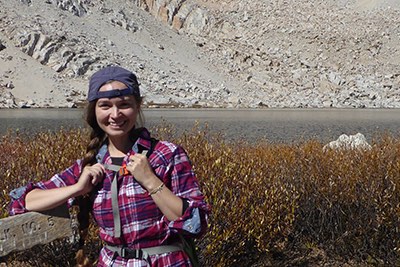
Catherine M. Oikonomou is a research scientist and science writer at Caltech. She received her doctorate from the Rockefeller University, where she worked with Dr. Frederick Cross on cell cycle control in budding yeast. In 2012, she joined the lab of Dr. Grant Jensen at Caltech to explore microbial cell biology through cryo-electron tomography.
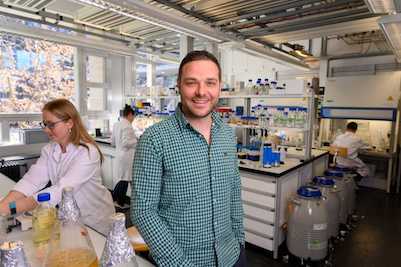
Martin Pilhofer is a Professor in the Institute of Molecular Biology & Biophysics at ETH Zürich in Switzerland. He earned his PhD in microbiology from the Technical University of Munich, working with Karl-Heinz Schleifer on bacterial phyla with unique cellular features. Recognizing the power of cryogenic electron tomography (cryo-ET) to characterize these structures, he joined Grant Jensen’s lab at Caltech as a postdoc in 2008, where he used cryo-ET to reveal several fascinating bacterial structures, including cytoskeletal elements and contractile weaponry. In 2014 he established his own lab in Zürich, where he leads a team applying cryo-ET to understand these and other macromolecular machines mediating bacterial cell-cell interactions.
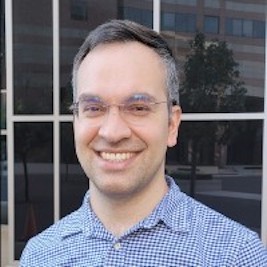
Sahand Pirbadian received his doctorate in Physics in 2015 from University of Southern California, working with Moh El-Naggar on extracellular electron transfer in bacteria and bacterial outer membrane extensions. During his post-doctoral work, from 2015 to 2018, he collaborated with Grant Jensen’s lab on cryo-electron microscopy of bacterial structures involved in extracellular electron transfer. Currently, he is a senior research engineer at Presidio Medical in South San Francisco, working on developing novel neuromodulation technologies.
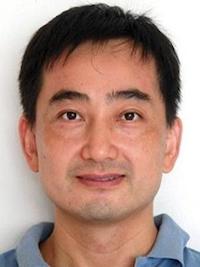
Jian Shi received his Bachelor’s degree in Chemistry from Peking University, China and his Ph.D. in biophysics and molecular physiology from the School of Medicine at Vanderbilt University, USA. At Vanderbilt, he worked in Dr. Phoebe Stewart’s lab to study small heat shock proteins with CryoEM and other biophysical methods. After his Ph.D., he joined Dr. Grant Jensen’s lab at Caltech/HHMI as a CryoEM specialist to study ultra-structures in bacteria. After spending one year in the FEI Company, he has since been the manager of the Cryo-Electron Microscopy Facility at the National University of Singapore.
Poorna Subramanian is the Director of Enterprise Science and Innovation Partnerships at Thermo Fisher Scientific. She earned her PhD from Wayne State University, where she worked with Professor Tim Stemmler to understand molecular mechanisms of iron homeostasis in cells. In 2013, she joined Grant Jensen’s lab at Caltech, where she used cryo-electron tomography to reveal the nanoscale machinery of bacterial cells, including nanowires, magnetosomes and flagellar motors. In 2018 she joined Thermo Fisher Scientific, where she helps bring cryo-electron microscopy technology to labs around the world.
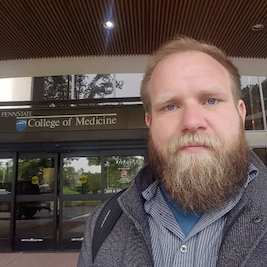
Matt Swulius received his Ph.D. from the University of Texas Health Science Center where he studied developmental changes in synaptic signaling complexes under Dr. Neal Waxham. He then did his postdoc at Caltech, with Dr. Grant Jensen, where he studied the microbial cytoskeleton using cryo-electron tomography. Now Matt has his own lab at the Penn State College of Medicine, where he uses his training in cryo-EM to study neuronal ultrastructure.
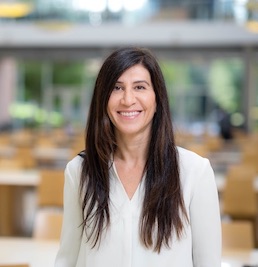
Dr. Elitza Tocheva graduated with her PhD in Microbiology and Immunology from the University of British Columbia in 2007, where she worked on characterizing the mechanism of bacterial enzymes involved in denitrification. She continued her structural biology studies as a postdoctoral scholar in the laboratory of Dr. Grant Jensen at Caltech where she applied cryo electron tomography and correlative microscopy approaches to study the ultrastructure of bacteria. She joined Université de Montréal as an Assistant Professor in June of 2015 and in January of 2019 was recruited to the Department of Microbiology and Immunology at UBC. Her lab combines microbiology, biochemistry and structural biology to study sporulation, membrane biogenesis, and host-pathogen interactions.
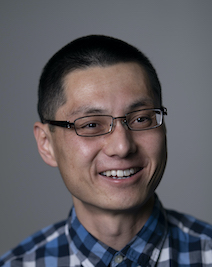
Yuhang (Steven) Wang is a scientist at Quantum Simulation Technologies (QSimulate), Inc., in Cambridge, MA. He received his undergraduate degree in Biotechnology from Shandong University (China), an M.S. degree in Computational Chemistry from the University of Oklahoma, an M.S. degree in Applied Mathematics and a Ph.D. degree in Biophysics and Computational Biology from the University of Illinois, Urbana-Champaign. Before moving to his current position, Wang was a postdoctoral scholar in Prof. Grant Jensen’s research group at the California Institute of Technology. He has worked on research projects in multiple areas of Molecular Biology, such as molecular immunology in crustaceans, Alzheimer’s disease, human T-cell receptors, ion channel proteins, and bacterial mobility and sensing. Currently, he is working on developing new computational methods for pharmaceutical drug discoveries at QSimulate, Inc.
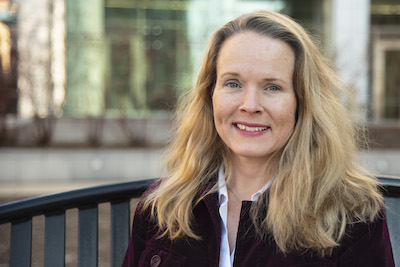
Elizabeth Wright is a Professor in the Department of Biochemistry at the University of Wisconsin, Madison. She is the director of the Cryo-EM Research Center (CEMRC) at UW-Madison and the Midwest Center for Cryo-Electron Tomography (MCCET), an NIH-funded National Center for Cryo-ET. She earned her PhD in Chemistry at Emory University in the laboratory of Prof. Vincent P. Conticello. It was during her PhD studies that she first began to explore macromolecular complexes and cellular systems with electron microscopy (EM) and cryo-EM. She joined Grant’s lab at Caltech as a postdoc from 2003-2008. In Grant’s lab she used cryo-ET to study HIV maturation, bacterial structure, and bacteria-bacteriophage interactions. In 2008, she established her cryo-EM lab where the group explores structure-function questions related to pathogenic viruses and bacteria, bacteriophage, blood cells and macromolecules, and neurons.
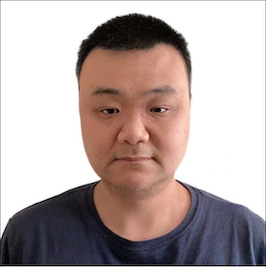
Dr. Qing Yao received his Ph.D. in Biochemistry and Molecular Biology from Dr. Feng Shao’s lab at National Institute of Biological Sciences, Beijing, where he worked on elucidating the molecular mechanisms of pathogen-host interactions from a structural biology perspective. He continued his structural biology studies as a postdoctoral scholar in the laboratory of Dr. Grant Jensen at Caltech. He studied bacterial cytokinesis using cryo-electron tomography at Caltech. He joined Amgen Thousand Oaks headquarters as a scientist in structural biology in November of 2020 and became a group leader and manager in March 2022.
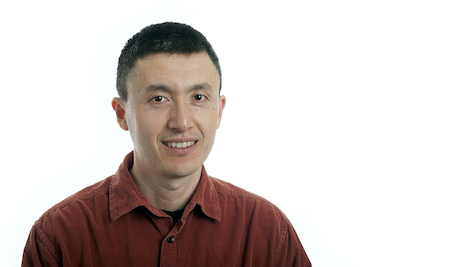
Zhiheng received his BS in physics from Peking University and received his MS and PhD degrees from Physics Department at Cornell University. At Cornell he worked with Professor John Silcox to characterize various nano-materials using high resolution transmission electron microscopy (TEM), high resolution scanning transmission electron microscopy (STEM), electron energy loss spectroscopy (EELS), electron nano-diffraction and computer simulation. After obtaining his PhD in 2004, he switched field from physics to biology and worked as a postdoc researcher in Professor Grant Jensen’s lab at Caltech. There he learned and used cryogenic electron microscopy (cryoEM) to study the structure of various biological samples, including protein complexes, HIV virus and small bacterial cells with either single particle or cryo electron tomography techniques. In 2009 he joined FEI Company as a Research Scientist to work on the very early version of the now popular and powerful cryo electron microscope, the Titan Krios. In January 2011 he joined HHMI Janelia Research Campus to become the inaugural director of the CryoEM Shared Resource and has helped many HHMI users from various geographic locations.